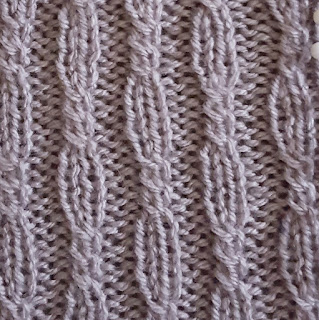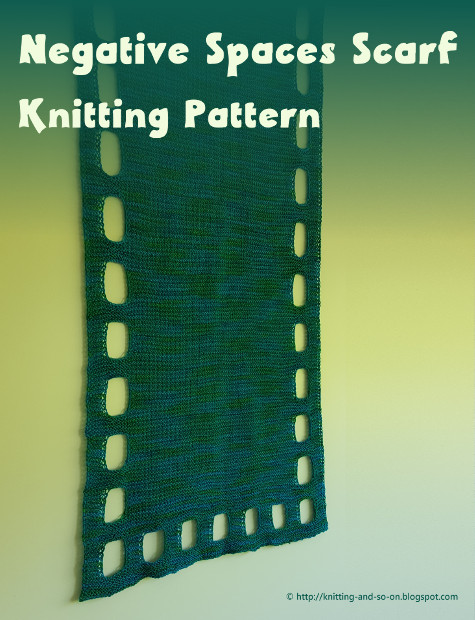In the beginning of this year one yarn store in Cologne had a closing-down sale. I still had a gift voucher for them. So I went there and - among other stuff - I bought a skein of Hoooked Zpaghetti, and I decided to use it to make a bath mat.
There are quite a few patterns around on how to crochet a bath mat (e.g.
this one), but I prefer knitting to crochet and I also really liked the idea of doing something in garter stitch; not only because like the look of it, but also because it really feels nice and squishy under naked feet (something I knew
from the time I knitted a t-shirt yarn rug on the basis of the
Ten Stitch Blanket by Frankie Brown).
I wanted to knit a rectangular shape, but also do something with short rows, so I first tried something in a different yarn.
My first attempt of shaping this mat wasn't quite to my liking - the ratio wasn't quite right, but it worked as a place mat or doily.
Fortunately, the second attempt worked better - and here is the pattern for it. Enjoy!
Of course it can also be a washcloth or a doily, if you do it in another yarn.

This work by
Knitting and so on is licensed under a
Creative Commons Attribution-NonCommercial-ShareAlike 4.0 International License.
 Materials
Materials
- T-shirt yarn - I used one skein of Hoooked Zpaghetti that I had bought at a sale, it weighed a bit more than 650 grams and (according to the lable) was about 100 metres long
- appropriate knitting needles (12mm needles in my case)
- a crochet hook and some bulky-ish scrap yarn for the provisional cast
Techniques
- Provisional CO: My favorite method for a provision CO is the crochet provisional CO - it is shown in this Youtube video by New Stitch a Day.
- Short rows with wrap and turn (w+t) - as shown in this YouTube video by Very Pink Knits.
- Picking up and knit stitches from the side: Insert the needle into the front leg of the edge stitch from back to front and draw your working yarn through. In case of this pattern you only need to pick up one stitch at a time.
- Grafting in Garter Stitch: A technique to get an invisible (knitted) seam - this technique is shown in this YouTube Video by knittinghelp.com.
Construction
When knitting this piece you start with a provisional CO (in red t-shirt yarn on the photo). During the first part, the rows are getting shorter (one stitch every two ridges). In part 2, the ridges are getting longer again (two stitches for every ridge). Parts 3 and 4 are parts 2 and 1 backwards. You have then knitted a square and turned your knitting by 180°.
Parts 5 to 8, are a repeat of parts 1 to 4.
After knitting around four corners and the two sides (CO and last row) are grafted in garter stitch.
Yarn "Management"
Since the amount of "yarn" was finite - and I wanted to use up as much as possible - I had to adapt the size. So I weighed the skein before beginning (657 grams) and after finishing part 1 (570 grams).
All parts use up the same amount of yarn, i.e. there are 8 equal parts.
For the first part I had needed 87 grams (657 - 570). 87 grams times 8 would be 696 grams - which would be more than I had.
So I frogged and the next time I started with a shorter CO of 18 stitches. After part 1 I had 576 grams. For the first part I had needed 81 grams (= 657-576). 81 times 8 = 648 grams - which is close enough to the amount of yarn I had and - more importantly - I had enough :)
Instructions
The pattern is written in a way, that you can adapt it to the size you want. To calculate the final size, multiply the width of the CO sts by 2 for the height and by 3 for the width.
Provisionally CO the calculated number of sts with scrap yarn and knit the first row with your working yarn. I did a CO of 18 sts.
Part 1
Ridge 1: k up to last st, w+t, k to end
Ridge 2: k to 1 sts before last wrap, w+t, k to end
Ridge 3: k up to last wrap, turn (without wrapping), sl1, k to end
Ridge 4: k up to slipped st of the last row, w+t, k to end
Repeat ridges 2 to 4 until your last row was only 1 st long. If you did a CO of 18 sts (or any other multiple of 3) you will end on a ridge 4. Depending on the number of sts you cast on, you may end on a different ridge.
Part 2
Ridge 1: k1, w+t, k to end
Ridge 2: k up to first wrapped stitch, pick up 1 st (from a slipped stitch), w+t, k to end
Ridge 3: k up to first wrapped stitch, w+t, k to end
If you didn't end part 1 on a ridge 4, you may have to do a ridge 3 before knitting a ridge 2 for the first time.
Repeat ridges 2 and 3 until all stitch on your needle are used.
Part 3
Ridge 1: k to last st, w+t, k to end
Ridge 2: k to 1 before last wrap, w+t, k to end
Ridge 3: k to 2 before last wrap, w+t, k to end
Repeat ridge 3 until the last row is only 1 or 2 sts long
Part 4
Ridge 1: k1, w+t, k1
Ridge 2: k up to first wrapped stitch, k2tog, turn (without wrapping), sl1, k to end
Ridge 3: k up to and including k2tog of last ridge, w+t, k to end
Ridge 4: sl1, k up to first wrapped stitch, k1, w+t, k to end
Repeat ridges 2 to 4 until all sts on your needle are used.
Inbetween Ridge: sl1, k to end, turn, sl1 k to end
Part 5
= Part 1
Part 6
= Part 2
Part 7
= Part 3
Part 8
= Part 4
Finishing:
Put the stitches from the provisional CO on the second needle - cut your yarn, but leave a tail long enough for grafting.
Graft in garter stitch.
If there is a small hole in the middle of the piece, use the end to sew it closed.
Weave in ends














































